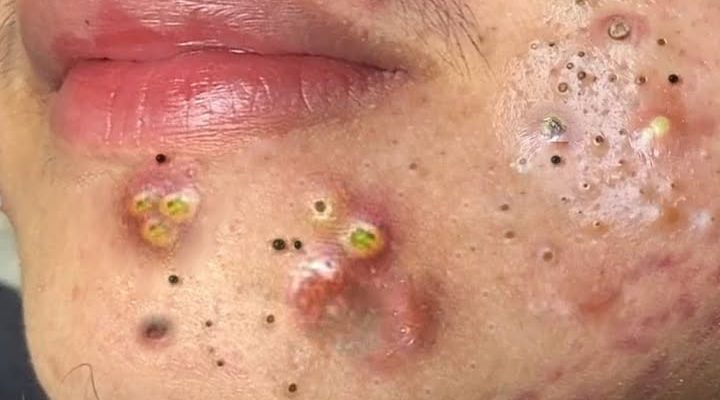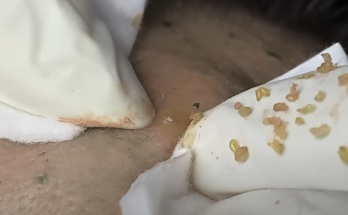The Ultimate Guide to Understanding and Removing Acne: Causes, Treatments, and Clear Skin Strategies
Introduction
Acne is one of the most common skin conditions in the world, affecting people of all ages, backgrounds, and skin types. Whether you’re struggling with the occasional breakout or dealing with chronic cystic acne, it can take a serious toll on your confidence, comfort, and overall well-being. But the good news is: acne is treatable — and even preventable — with the right knowledge, tools, and habits.
This comprehensive guide dives deep into what causes acne, how to treat it, and what you can do to finally achieve clear, healthy skin.
Chapter 1: What Is Acne?
Acne is a skin condition that occurs when hair follicles become clogged with oil (sebum), dead skin cells, and bacteria. This blockage leads to inflammation, swelling, and the formation of various types of pimples. It most commonly appears on the face, chest, back, and shoulders — areas of the body with the most active oil glands.
The 4 Main Factors That Cause Acne:
Excess oil production
Dead skin cell buildup
Bacteria (Cutibacterium acnes)
Inflammation
Acne isn’t just a cosmetic concern — it’s a skin disorder that can reflect deeper internal imbalances like hormonal fluctuations, stress, or poor diet.
Chapter 2: Types of Acne
Understanding the type of acne you have is key to treating it effectively. Each type has a different cause, severity level, and recommended treatment.
1. Blackheads (Open Comedones):
Pores clogged with sebum and dead skin that remain open to the air, causing them to oxidize and turn dark.
2. Whiteheads (Closed Comedones):
Pores clogged beneath the skin’s surface — they appear as small white or flesh-colored bumps.
3. Papules:
Small, red, inflamed bumps without pus.
4. Pustules:
Papules that have developed a white or yellow center (pus).
5. Nodules:
Hard, painful lumps deep beneath the skin. More severe and harder to treat.
6. Cystic Acne:
Large, pus-filled lumps deep under the skin that can be painful and often lead to scarring.
Chapter 3: Common Causes of Acne
1. Hormones:
Fluctuations in androgens (especially during puberty, menstrual cycles, or pregnancy) can increase oil production.
2. Diet:
High glycemic foods, dairy, and processed snacks have been linked to increased acne in some individuals.
3. Stress:
Stress can trigger hormonal responses that increase oil production and inflammation.
4. Poor Skincare Habits:
Over-washing, using harsh products, or not cleansing properly can worsen breakouts.
5. Medications:
Certain steroids, birth control pills, and other drugs can cause acne as a side effect.
6. Environmental Factors:
Pollution, humidity, and exposure to certain chemicals can clog pores.
Chapter 4: Daily Skincare Routine for Acne-Prone Skin
Morning Routine:
Gentle cleanser (sulfate-free)
Lightweight, non-comedogenic moisturizer
Broad-spectrum sunscreen (SPF 30+)
Evening Routine:
Remove makeup with micellar water or oil cleanser
Use salicylic acid or benzoyl peroxide cleanser
Apply a targeted treatment (retinoid, AHA/BHA serum)
Moisturize with a non-comedogenic cream
Weekly Add-Ons:
Clay mask for oil control
Exfoliation (1–2x/week, chemical preferred over physical)
Chapter 5: Professional Treatments
1. Facials for Acne:
Includes deep cleansing, steaming, extractions, and LED light therapy.
2. Chemical Peels:
Uses acids like glycolic or salicylic acid to exfoliate and resurface the skin.
3. Laser Therapy:
Targets the bacteria and inflammation that cause acne.
4. Prescription Medications:
Topical: Retinoids, antibiotics, dapsone
Oral: Antibiotics, hormonal treatments, isotretinoin (Accutane)
5. Microneedling and RF Therapy:
Effective for reducing acne scars and improving skin texture.
Chapter 6: Natural Remedies That May Help
Tea Tree Oil: Natural antibacterial properties.
Honey and Cinnamon Masks: Anti-inflammatory and antimicrobial.
Aloe Vera: Soothing and hydrating.
Green Tea: Both topical and oral use may reduce inflammation.
Note: Always do a patch test. Natural doesn’t always mean safe for everyone.
Chapter 7: Acne Mistakes to Avoid
Popping pimples (can cause scarring and infection)
Over-exfoliating
Using too many products at once
Not moisturizing oily skin
Sleeping with makeup on
Chapter 8: Preventing Future Breakouts
Stick to a consistent skincare routine
Change pillowcases regularly
Avoid touching your face
Keep hair products away from your forehead
Eat a balanced diet rich in whole foods
Chapter 9: Dealing with Acne Scars and Hyperpigmentation
Types of Acne Scars:
Ice pick scars
Boxcar scars
Rolling scars
Post-inflammatory hyperpigmentation (PIH)
Treatment Options:
Chemical peels
Microneedling
Laser resurfacing
Topical treatments (niacinamide, retinoids, vitamin C)
Chapter 10: The Emotional Side of Acne
Acne can have a deep psychological impact. Many people report feeling embarrassed, anxious, or even depressed due to persistent skin issues.
Tips for Coping:
Practice self-compassion
Focus on overall health, not just appearance
Seek support (online communities, therapy)
Remember: You are more than your skin
Conclusion
Removing acne takes time, patience, and a multi-faceted approach. There’s no one-size-fits-all solution — but by understanding your skin, avoiding common mistakes, and exploring a mix of professional and home care, you can find a path to clearer, healthier skin. Acne doesn’t define you — and with the right steps, it doesn’t have to control you either.



